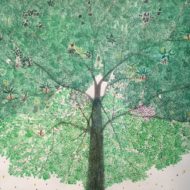A journal article I worked on during the first year of my PhD entitled “Narrating Networks: Exploring the Affordances of Networks as Storytelling Devices in Journalism”, has recently been published in Digital Journalism.
The article examines five ways in which networks have been used to tell stories in journalism, from exploring associations around single actors, to detecting key players, mapping alliances and oppositions, exploring the evolution of associations over time, and revealing hidden ties. A list of over 40 journalism projects that use network diagrams or visualisations which we compiled while doing this research has been published with the article and can be accessed on figshare.
The article is co-authored with Jonathan Gray of the University of Amsterdam, Tommaso Venturini from King’s College London and Mathieu Jacomy from the Sciences Po Paris medialab.
The title and the abstract are copied below. An open access pre-print of the paper is available here (PDF).
Narrating Networks: Exploring the Affordances of Networks as Storytelling Devices in Journalism
Liliana Bounegru, Tommaso Venturini, Jonathan Gray & Mathieu Jacomy
Networks have become the de facto diagram of the Big Data age (try searching Google Images for [big data AND visualisation] and see). The concept of networks has become central to many fields of human inquiry and is said to revolutionise everything from medicine to markets to military intelligence. While the mathematical and analytical capabilities of networks have been extensively studied over the years, in this article we argue that the storytelling affordances of networks have been comparatively neglected. In order to address this we use multimodal analysis to examine the stories that networks evoke in a series of journalism articles. We develop a protocol by means of which narrative meanings can be construed from network imagery and the context in which it is embedded, and discuss five different kinds of narrative readings of networks, illustrated with analyses of examples from journalism. Finally, to support further research in this area, we discuss methodological issues that we encountered and suggest directions for future study to advance and broaden research around this defining aspect of visual culture after the digital turn.
